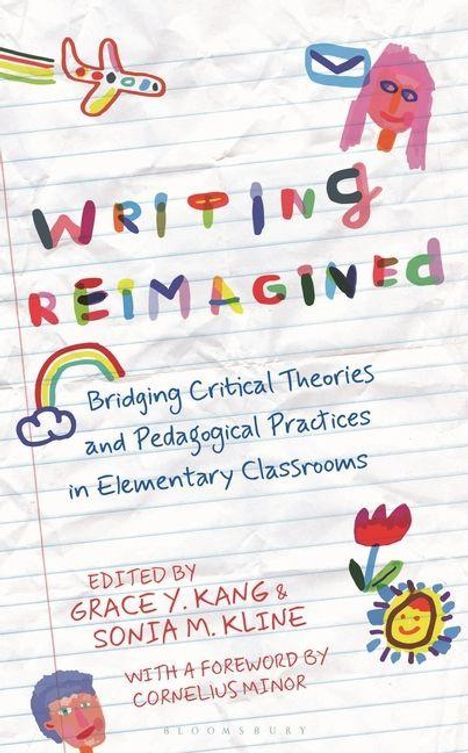Writing Reimagined, Gebunden
Writing Reimagined
- Bridging Critical Theories and Pedagogical Practices in Elementary Classrooms
Sie können den Titel schon jetzt bestellen. Versand an Sie erfolgt gleich nach Verfügbarkeit.
- Herausgeber:
- Grace Y. Kang, Sonia M. Kline
- Verlag:
- Bloomsbury Publishing PLC, 03/2026
- Einband:
- Gebunden
- Sprache:
- Englisch
- ISBN-13:
- 9798881803667
- Artikelnummer:
- 12316221
- Umfang:
- 296 Seiten
- Gewicht:
- 454 g
- Maße:
- 229 x 152 mm
- Stärke:
- 25 mm
- Erscheinungstermin:
- 19.3.2026
- Hinweis
-
Achtung: Artikel ist nicht in deutscher Sprache!
Weitere Ausgaben von Writing Reimagined |
Preis |
|---|---|
| Buch, Kartoniert / Broschiert, Englisch | EUR 38,51* |
Klappentext
This book invites educators to rethink writing instruction in ways that are joyful, purposeful, and justice-driven. Grounded in humanizing pedagogy, critical literacy, and culturally sustaining pedagogy, this book affirms the brilliance of elementary children and their teachers, positioning them as powerful storytellers, thinkers, and changemakers.
Focusing on elementary education-a space often underrepresented in social justice education-this volume features contributions from both emerging and established equity-centered educators and scholars. Each chapter explores one of ten interrelated concepts: identity, translanguaging, raciolinguistics, trauma, multimodality, pop culture, play, activism, resistance, and love.
This book is more than a collection of strategies-it's a flexible framework, a set of generative pathways, and a call to action. Together, these elements honor teachers' autonomy and local knowledge while inviting educators to examine assumptions, deepen understanding, and reimagine writing pedagogy in ways that are both critical and humanizing.
Written for pre-service teachers, classroom educators, and teacher educators, this book weaves together insights from critical theory-ideas that illuminate power, identity, and justice-with concrete classroom practices.
Ultimately, this book invites educators and students to co-create writing communities rooted in agency, justice, and joy.

